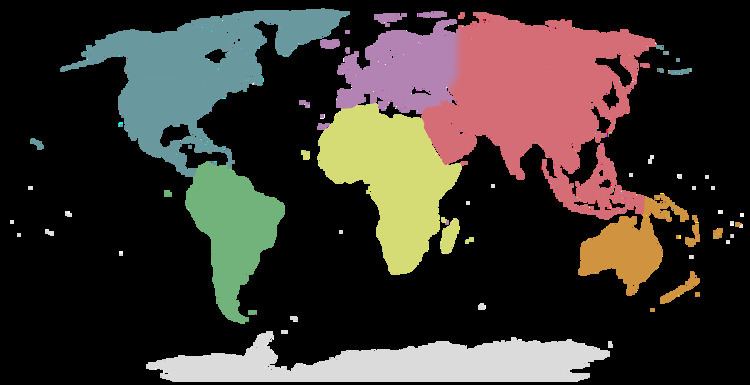 | ||
Islam is the fourth-largest religion in Ukraine, representing 0.6%–0.9% of the population. The religion has a long history in Ukraine dating back to the establishment of the Crimean Khanate in the 15th century.
Contents
Sunni Islam of the Hanafi school is the largest non-Christian religion in Ukraine, and the majority of Ukrainian Muslims are Crimean Tatars. Other Turkic peoples indigenous to Ukraine, predominantly found in South and south-east Ukraine, practice other forms of Islam. These include Volga Tatars, Azeris, North Caucasian ethnic groups and Uzbeks. In 2012 an estimated 500,000 Muslims lived in Ukraine, including 300,000 Crimean Tatars. In February 2016 Said Ismagilov, the mufti of Ummah, counted one million Muslims in Ukraine.
While there is no general governing structure for Muslims in Ukraine, mono-ethnic communities in multi-ethnic regions are served by their ethnic institutions and supported by their international counterparts. The major Islamic institutions supporting communities are found in Kiev, Crimea, Simferopol and Donetsk. Independent Salafi communities are also found in Kiev and Crimea, as well as Shia communities in Kiev, Kharkiv and Luhansk.
History of Muslims in Ukraine
While ethnic Ukrainians are predominantly Orthodox and Uniate Christians, Muslims have lived in the territory that makes up modern Ukraine for centuries. Muslim settlements are concentrated in the country's southern half, particularly in Crimea, although there are Lipka Tatars colonies in other regions such as Volhynia and Podolia.
The history of Islam in Ukraine is associated with the Crimean Tatars, the Turkic speaking descendants of Turkic and non-Turkic peoples who had settled in Eastern Europe as early as the 7th century. They established the Crimean Khanate in southern Ukraine in the 15th century. The Khanate soon lost its sovereignty and fell under the influence of the Ottoman Empire, although its local rulers retained a significant degree of autonomy. From the 15th to the 18th centuries, Crimean Tatars frequently raided Eastern Slavic lands to capture their inhabitants, enslaving an estimated three million people, predominantly Ukrainians. The Khanate ended after growing Russian influence led to its annexation into the Russian Empire after the Russo-Turkish Wars in the late 18th century.
The Crimean Tatars were Sunnis, and their mufti was regarded as the highest religious figure. Tatar communities were led and represented by local imams.
At the time the Khanate was annexed by Russia, its capital of Bakhchysarai had at least 18 mosques along with several madrassas. However, the Russian Empire began persecuting the Muslim population, and nearly 160,000 Tatars were forced to leave Crimea.
20th century
At the time of the Russian Revolution in 1917, Muslims constituted one-third of Crimea's population. Nearly all major cities in Crimea had significant Muslim populations.
Crimean Muslims were subjected to mass deportation in 1944 when Joseph Stalin accused them of collaborating with Nazi Germany. More than 200,000 Crimean Tatars were deported to Central Asia, primarily the Uzbek SSR. It is estimated that more than 100,000 deportees died of starvation or disease due to the deportation. The property and territory abandoned by Crimean Tatars was appropriated by the mostly ethnic Russians who were resettled by the Soviet authorities, leading to large demographic changes in Crimea. Although a 1967 Soviet decree removed the wartime collaboration charges against Crimean Tatars, the Soviet government did nothing to facilitate their resettlement in Crimea, and the repatriation of Crimean Tatars to their homeland only began in 1989.
Ukrainian Muslims today
Since the Ukrainian independence in 1991, the return of Crimean Tatars to Crimea has increased compared to the Soviet era. Although Ukraine's Muslim population consists of various ethnic groups, the majority are of Tatar origin. There has also been a proportionally small settlement of Muslim Chechen refugees in Crimea and other parts of Ukraine.
Muslims in Ukraine have 445 communities, 433 ministers, and 160 mosques, with many more mosques currently being built.
Estimates of the Ukrainian Muslim population vary. Muslims make up only approximately 0.9% of the Ukrainian population, but as much as 12% in Crimea. According to the 2000 census Ukraine was home to 248,193 Crimean Tatars, 73,304 Volga Tatars, 45,176 Azeris, 12,353 Uzbeks, 8,844 Turks, 6,575 Arabs and 5,526 Kazakhs. The 2012 Freedom Report estimating a Muslim population of 500,000 in Ukraine, including 300,000 Crimean Tatars. A 2011 Pew Forum study estimated a Ukrainian Muslim population of 393,000, but the Clerical Board of Ukraine's Muslims claimed there were two million Muslims in Ukraine as of 2009. According to Said Ismagilov, the mufti of Ummah, in February 2016 one million Muslims lived in Ukraine.
Muslims have formed three structures for running their affairs. These are:
Most Ukrainian Muslims affiliate to these organizations, which help them join mainstream Islamic and Ukrainian daily life. There are nearly 360 registered Ukrainian Muslim communities and organizations, and at least 30 communities work without official registration. Attempts to create a Ukrainian Muslim political party led to the creation of the Party of Muslims of Ukraine, but its registration certificate was canceled in November 2011 because it had not nominated candidates in elections since the 1998 parliamentary elections. Muslims have also formed several charitable organizations, including the CAAR Foundation, Al-Bushra, and Life after Chornobyl. Arraid (The Interregional Association of Public Organizations) is another Muslim organization which has gained notable attention.
An advance copy of first complete translation of the Quran into Ukrainian was released in Saudi Arabia in 2012.
Due to the 2014 Russian annexation of Crimea and the War in Donbass, which is fought near Donetsk and Luhansk, 750,000 Muslims (including half-million Crimean Tatars) are living in territory no longer controlled by Ukraine. (According to figures as stated by Said Ismagilov, the mufti of Ummah.)
